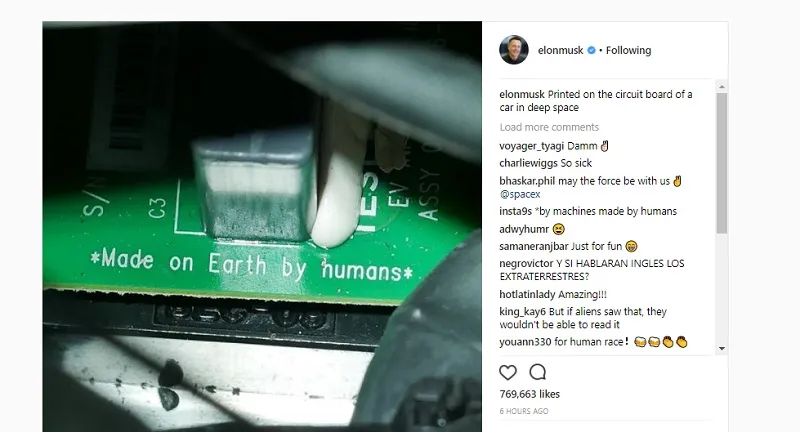SpaceX launches Falcon Heavy; Elon Musk’s Tesla is enroute Mars' orbit
When SpaceX's, Falcon Heavy, lifted off from NASA's historic pad 39A at the Kennedy Space Center in Florida, on Tuesday, it became the most powerful operational rocket in the world by a factor of two. It has the ability to lift more than twice the payload of the next vehicle, at one-third the cost. Only the Saturn V moon rocket, last flown in 1973, delivered more payload to orbit.
The pad that hoisted men to the Moon almost 50 years ago underwent modifications by SpaceX to adapt it to the needs of its Falcon 9 and Falcon Heavy rockets.
The Falcon Heavy is a reusable super heavy-lift launch vehicle. Its first stage is composed of three Falcon 9 nine-engine cores whose 27 Merlin engines together generate more than 5 million pounds (2.3 million kg) of thrust at liftoff, equal to about eighteen 747 aircraft.
Falcon Heavy was designed from the outset to carry humans into space and restore the possibility of flying missions with the crew to the Moon or Mars, according to SpaceX.
Since this was a demonstration mission to collect critical data, it typically involves carrying steel or concrete blocks as mass simulators. SpaceX though decided it would be more worthwhile to launch something fun and without irreplaceable sentimental value: a red Roadster for the red planet.
The payload for Falcon Heavy's demonstration mission was SpaceX CEO and Lead Designer Elon Musk's midnight-cherry Tesla Roadster. Following launch, Falcon Heavy's second stage would attempt to place the Roadster into a precessing Earth-Mars elliptical orbit around the sun. Space X noted,
It's important to remember that this mission is a test flight. Even if we do not complete all of the experimental milestones that are being attempted during this test, we will still be gathering critical data throughout the mission. Ultimately, a successful demonstration mission will be measured by the quality of information we can gather to improve the launch vehicle for our existing and future customers.
Three cores make up the first stage of Falcon Heavy. The side cores, or boosters, are connected to the centre core at its base and at the vehicle's interstage. With a total of 27 Merlin engines, Falcon Heavy's three cores are capable of generating more than 5 million pounds of thrust.
SpaceX attempted to land all three of Falcon Heavy's first stage cores during this test. Following booster separation, Falcon Heavy's two side cores successfully landed at SpaceX's Landing Zones 1 and 2 (LZ-1 and LZ-2) at Cape Canaveral Air Force Station, Florida.
Falcon Heavy's centre core attempted to land on the "Of Course I Still Love You" droneship, which is stationed in the Atlantic Ocean. But according to reports, the centre core was only able to relight one of the three engines necessary to land, and so it hit the water at 300 miles per hour.
The rest of the experiment though went as planned. Tesla and Musk kept sharing regular updates on social media as viewers. The visitor center on the outskirts of Kennedy Space Center sold out its tickets for launch viewing and cars stretched for miles on the roads outside of Kennedy the morning before launch, according to Motherboard. An estimated 500 million viewers watched the launch online.
Here are some of the main highlights from the launch:
Last year when Musk had announce that he would put his car on the inaugural Falcon Heavy flight, Twitter users had asked him why he wanted to throw away a $100,000 vehicle, He had replied
I love the thought of a car drifting apparently endlessly through space and perhaps being discovered by an alien race millions of years in the future.
Musk also took to Instagram to share another easter egg that he was leaving for aliens to discover - 'A made on Earth by humans' etching on a printed circuit board.








